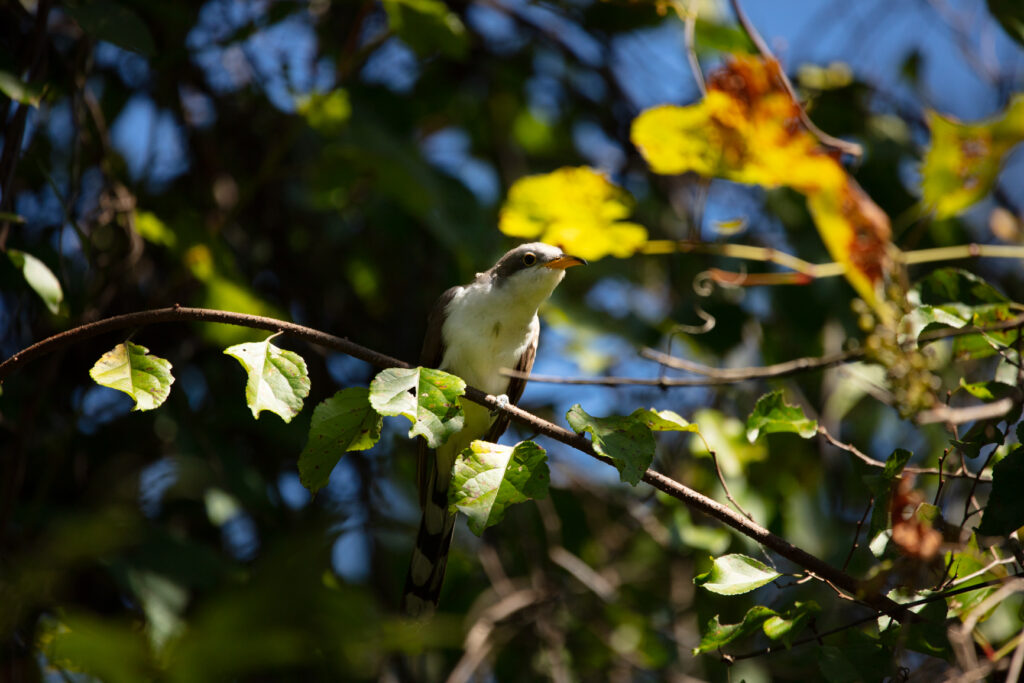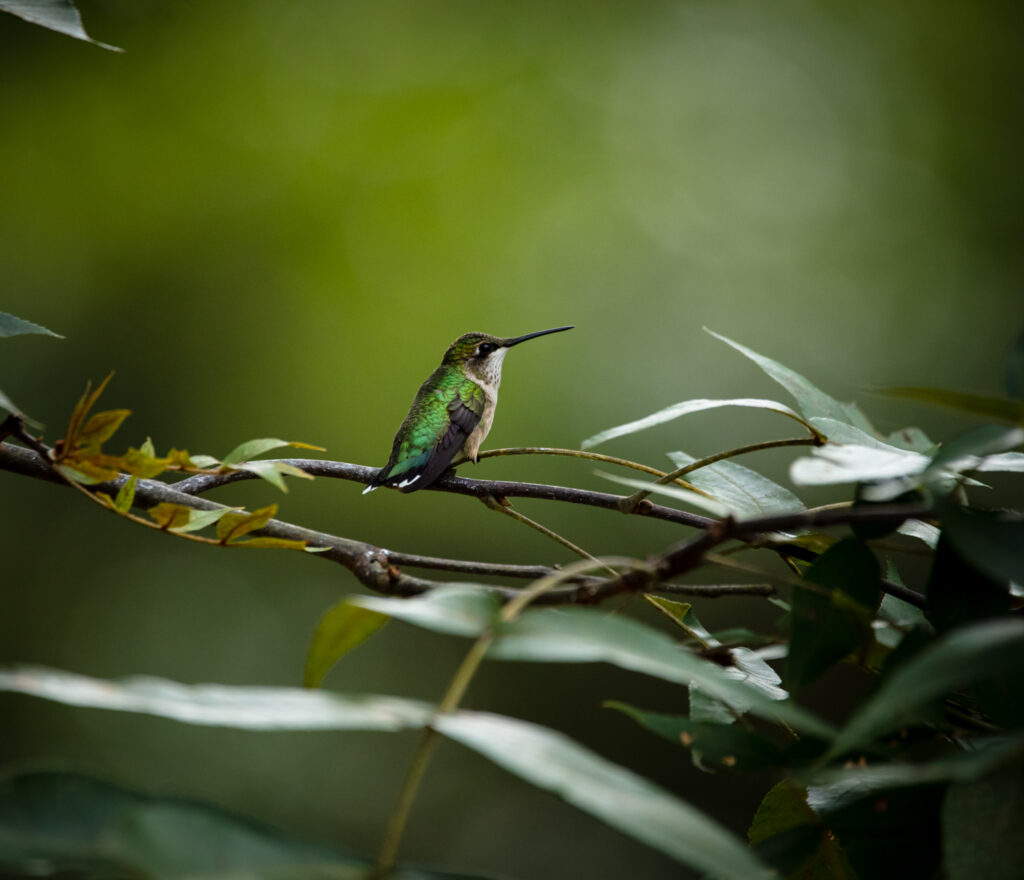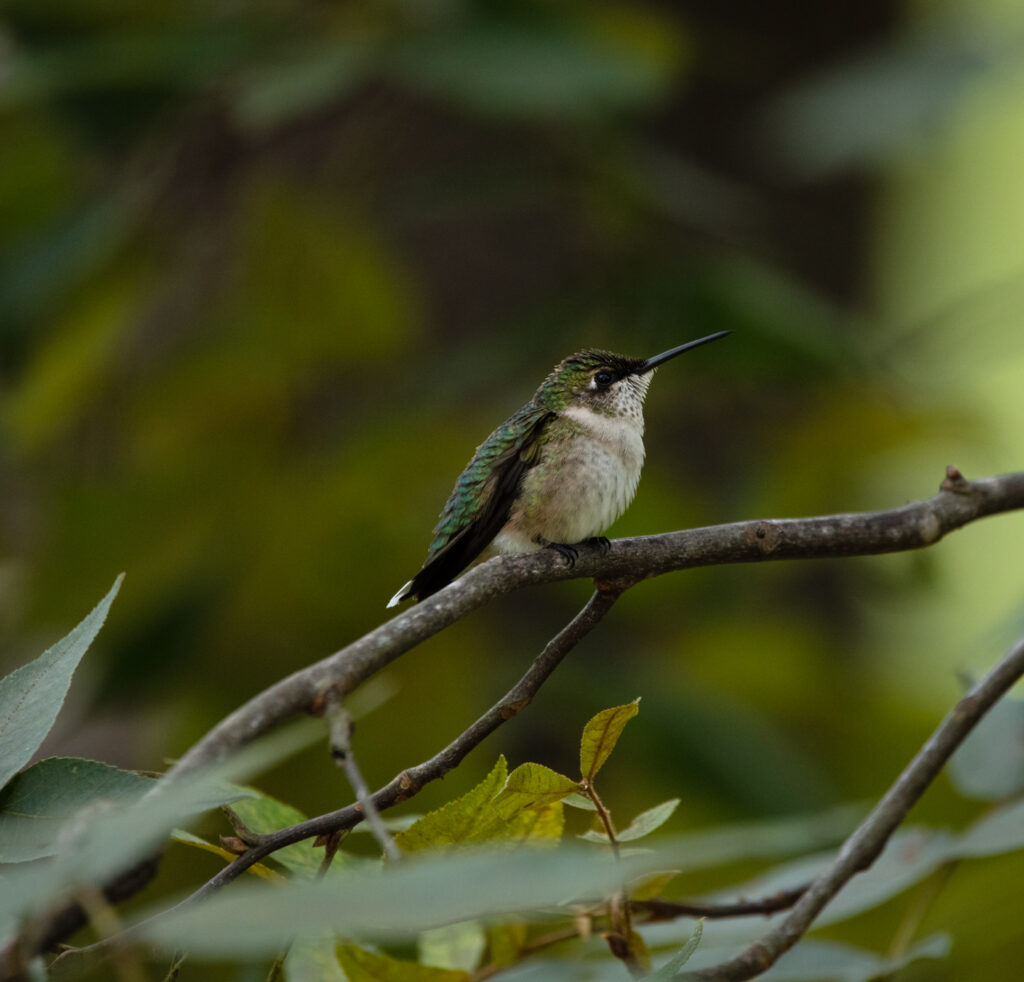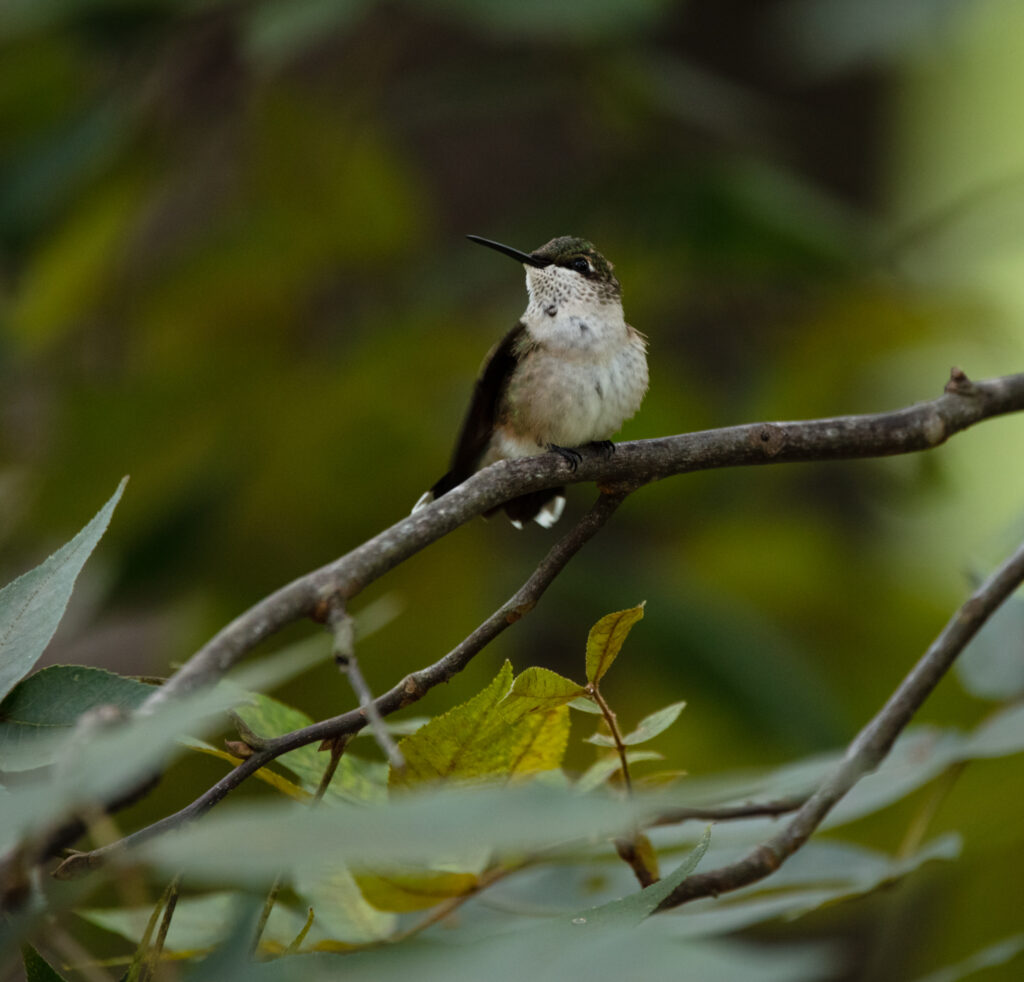Now here’s a bird that I’ve struggled to get a good photograph of, a Yellow billed Cuckoo.
I found this one at Charles D. Owen Park in Swannanoa N.C. last month while scouting the area for the birding tour I had scheduled for the following day.
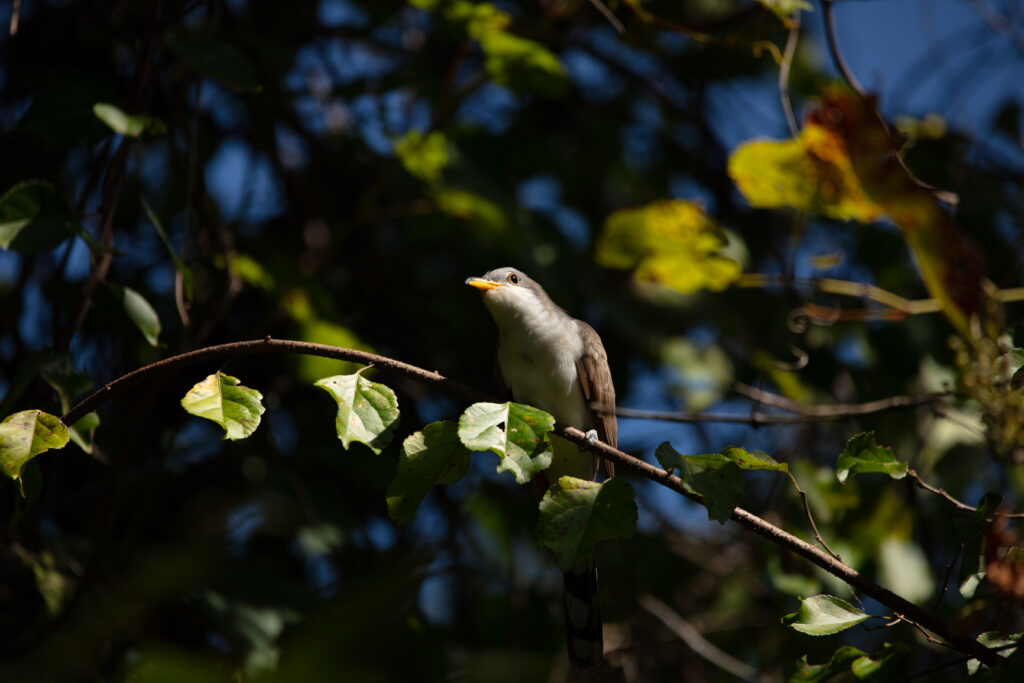
I was standing on the trail that circles the pond looking in a bush for a Warbler when I heard the rustle of flapping wings above my head.
Looking up, there was this Cuckoo curiously peering back down at me.
The sunlight was super bright so it was difficult to catch an angle of this striking bird in good light without it’s face being obscured by the contrasting shade.
Luckily the Cuckoo was in no hurry to move on which allowed me plenty of time to patiently wait for the perfect moment for it to cock it’s head in the right direction.
What a beauty!
From the mountains to the coast, Yellow billed Cuckoos breed in nearly every county of N.C. throughout the summer. Look for them in open woodlands, near ponds and forested streams with dense, low vegetation along its banks. They are also found in open areas such as orchards, overgrown pastures, and abandoned agricultural fields.
Despite being a somewhat large bird, Yellow-billed Cuckoos are often hard to spot as they move sneakily and quietly through the treetops looking for insects to eat. They feed primarily on caterpillars, (especially Hairy caterpillars!) which many other species of birds avoid, but they will also catch other insects in flight if the opportunity presents itself.
Though they have headed south for the winter, they’ll return to North Carolina in April. Get out there this spring to see one for yourself! These lovely birds are worth the patience to find them 🙂
Photos by @sally_siko of @birdwatching_nc on the fabulous full frame SLR, the @canonusa
#5Ds



